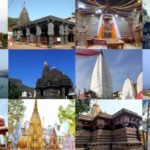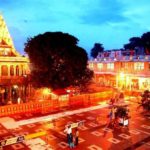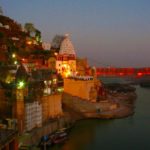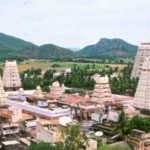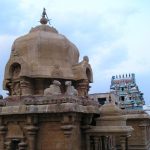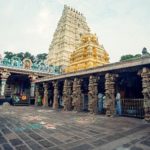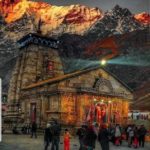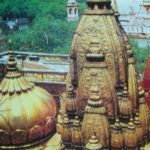The Kutralanathar Temple or Thirukutralam is located in the beautiful green surroundings of the Courtallam falls. It is dedicated to Sri Courtrallanathar, Thirukootachalapathi and Kuzhalvoimozhi Amman. The temple is one of the Pancha Sabhai Sthalams. There are mentions of the Kutralanathar Shiva Temple history in Tamil texts that date back to the 7th century.
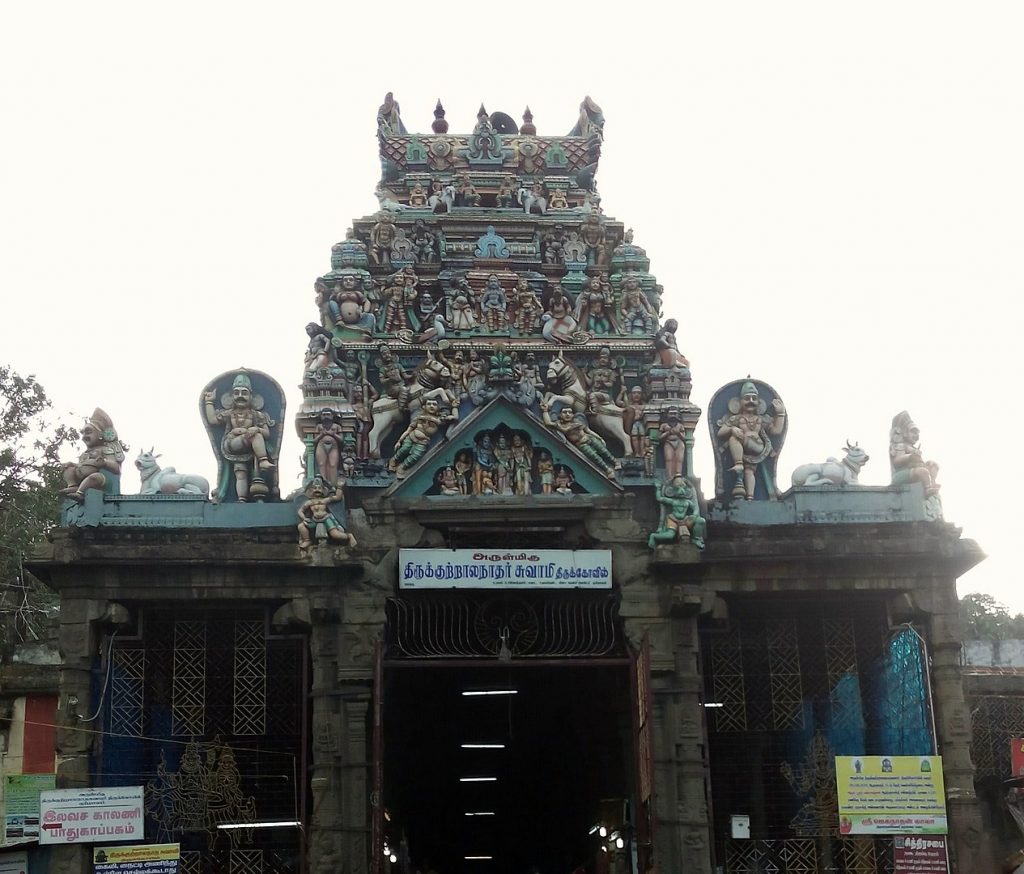
Front View Of The Kutralanathar Temple
Image Source
History
Raja Rajan constructed the temple. The Pandyas then constructed the Karuvarai Artha Mandapam, Maha Mandapam, the Kuzhalvoimozhi Amman shrine and the Pillayan Kattalai Mandapam. The Nayakars built the Parashakthi shrine, wall and streets.
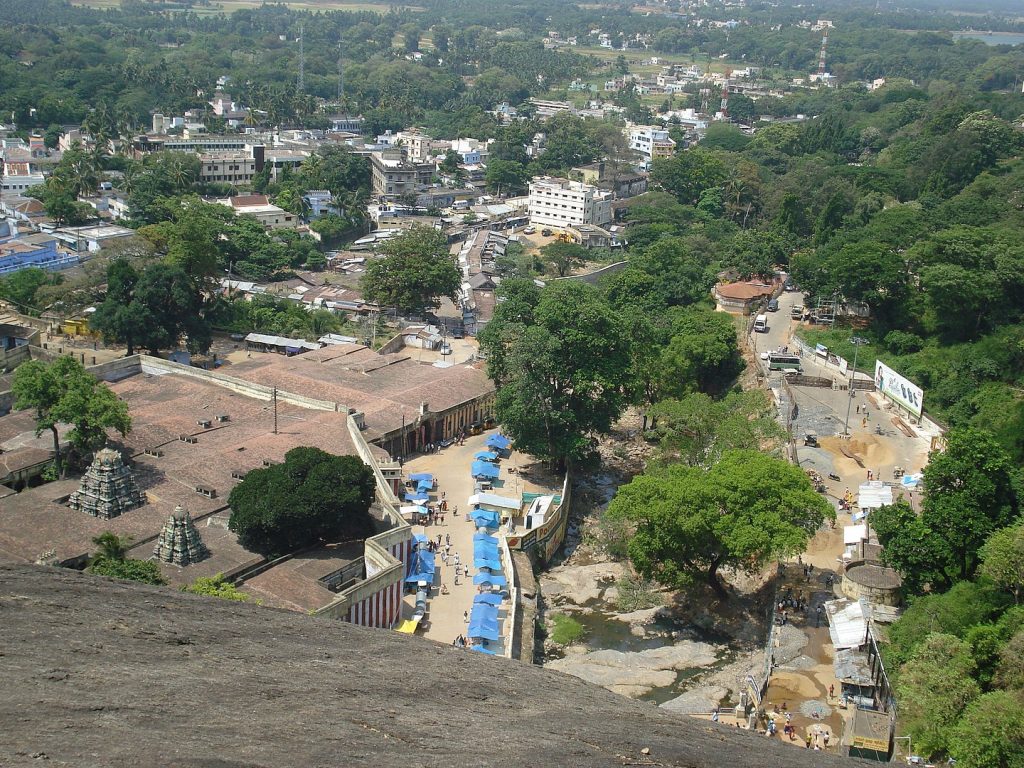
Aerial View Of The Kutralanathar Temple
Image Source
Legends
Sage Agasthiyar
When the divine wedding of Lord Shiva and Devi Parvathi took place in North India there were so many attendees that the balance of the earth would have been tilted. Therefore, Lord Shiva instructed Sage Agasthiyar to witness the wedding from Courtrallam. When he arrived at the temple the Dwarapalakas denied him entry. He then prayed to a Shiva Lingam that he made out of sand in the nearby Ilanji Kumaran temple. The Lord Murugan appeared before him and told him to enter the Kutralam temple as a Vaishnavite and then convert it into a Shiva temple. Devotees still visit this temple before proceeding to the Kutralanathar temple.
Sage Agasthiyar shrunk the image of Vishnu and made it a Shiva temple. The conch in Lord Vishnu’s hand became the temple and the Chakra transformed into the Sriharam. The Shiva Lingam still bears the marks of the sage’s hands. The shrinking of Lord Vishnu caused the deity to have a headache and the priests perform Abishekam with a concoction of oil and herbs. This is then distributed to the devotees as Prasadam. It is believed to cure headaches. The legends also state that when Lord Vishnu was changed into Kutralanathar, Sridevi became Kuzhalvoimozhi Amman and Bhoodevi became Parashakti. This is why there are two shrines to Devi in the temple.
During pooja, a mixture of Kadukai, pepper and other herbs and spices is offered to the Lord. It is meant to ward off colds and ill effects of always being by the Courtrallam waterfalls.
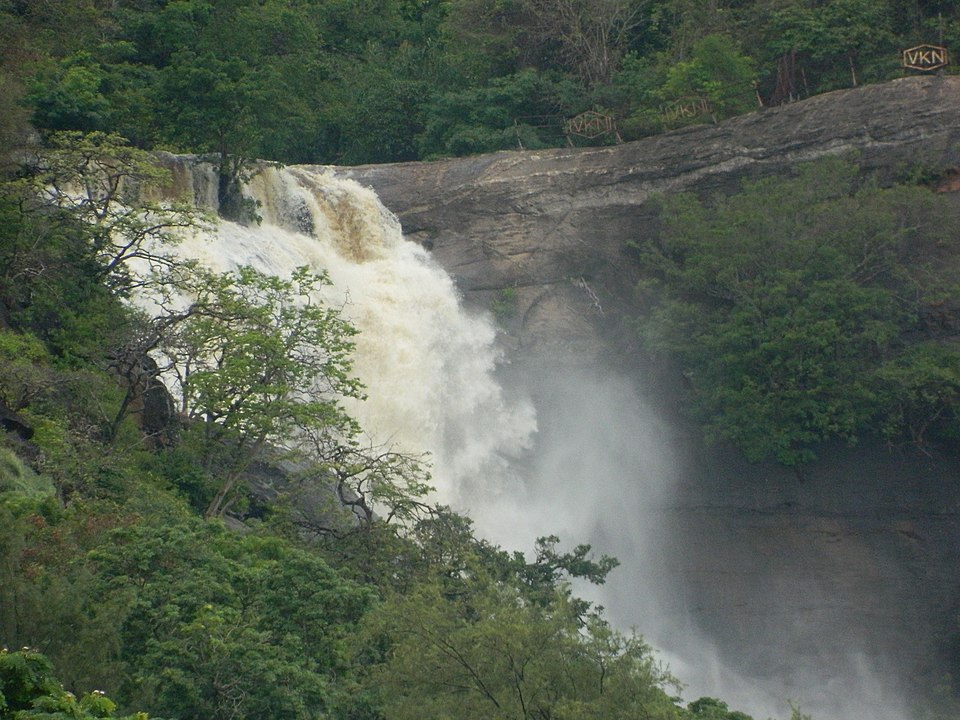
Image Source
Arjuna – The Lost And Found Shiva Lingam
Arjuna lost a Shiva Lingam in Varanasi. He found it again in Courtrallam on a Panguni Uthirma day and worshipped it and left it where he found it. Devotees worship this Lingam to recover something they have lost. There is also a special pooja for this Lingam on Panguni Uthiram.
Literary Mention
The Saint Tirugnanasambander has sung the glory of the Kutralam Temple in two Pathigams. He also praises the Sthala Vriksha or temple tree which is the jackfruit. Other great saints such as Pattinathar, Thirunavakatrasar and Manikavachagar have also praised Kutralanathar in their verses. The Thevaram verses that date to the rule of the Pallava kings also mention the temple. The poet Thrikooda Rasapa Kaviyar praised the deities Kutralanathar as well as Kuzhalvoimozhi in fourteen of his Chitrilakkiams.
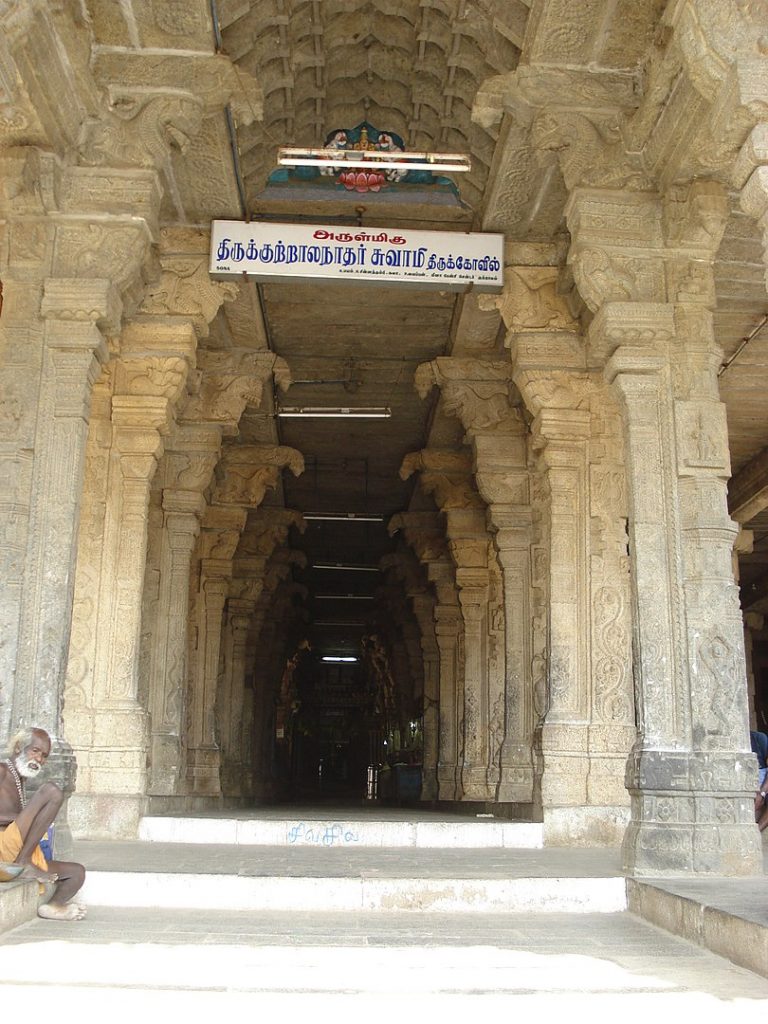
Image Source
Inscriptions
The temple has eighty-nine inscriptions that are in line with the legend of the temple being a Vishnu temple and then a Shiva temple. The earliest inscriptions refer to the deity as Thirukutrala Perumal and only the later inscriptions name the deity as Kutralathevan and Madavan. There are also interesting mentions of eclipses, the calculation of the dynasties and donations at the time.
Deities
The principal deity at the temple is Lord Shiva as Kutralanathar. The temple also has a shrine for his consort Kuzhalvoimozhi Amman. There are also idols of Annavi Pillai, Kailasanathar and Goddess Sri Durga. The temple also has idols of many saints and numerous other deities. There is a large Sri Chakra, installed by Sage Agastya himself at this temple.
There is a small shrine for Siddha Agastya behind the main deity. One can also find a small statue of Mahavatar Babaji at the entrance of the Agastya shrine. This is quite rare in an ancient temple.
Pancha Sabhai Sthalam
Lord Shiva performed his cosmic dance at five different temples. These temples are the Pancha Sabhai Sthalams which refers to the five halls. The Kutralanathar temple is the Chitra Sabhai. This translates as the hall with paintings. The Chitra Sabha or hall is located near the temple. It has a copper plate roof. The walls are decorated with beautiful paintings. The dyes used are from natural herbs.
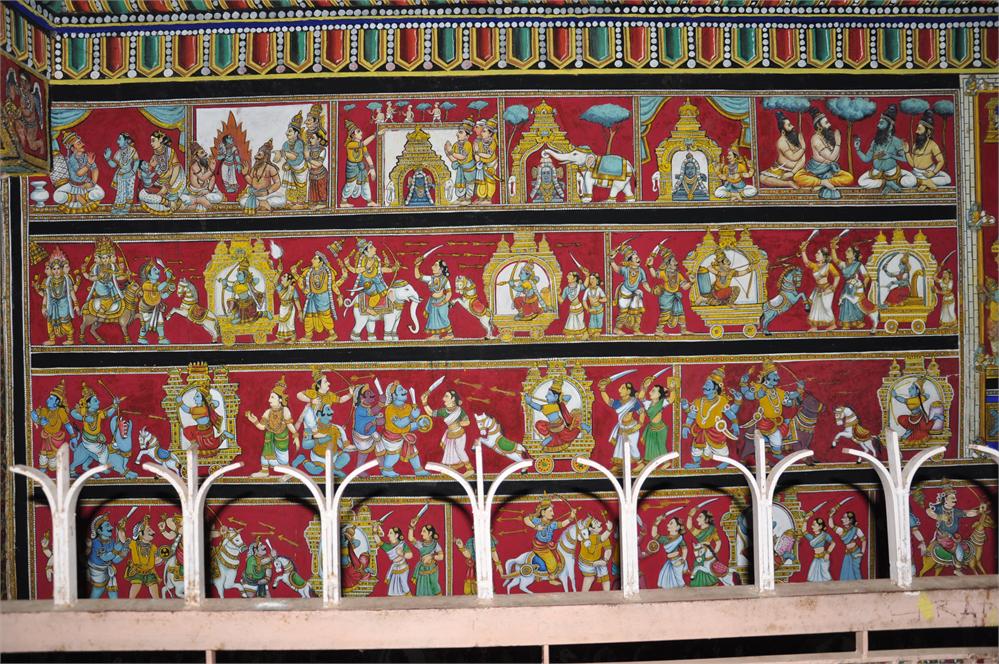
Image Source
The other Pancha Sabhai Sthalams are the Vadaranyeswarar Temple, Thiruvalangadu, the Nataraja Temple, Chidambaram, the Nelliappar Temple, Tirunelveli as well as the Madurai Meenakshi Temple, Madurai.
Parikrama Pandiyan (1422 AD – 1483 AD) commissioned the artwork in the Chitra Sabhai. The temple is also decorated with beautiful sculptures. There are also figures of bejewelled dancing girls who seem to welcome the visitor on either side of the entrance. The hall also has a sculpture of a singer with a musical instrument. The hall also has sculptures of Gods, Goddesses as well as Kings and incidents that are narrated in the Puranas.
Sthala Vriksha – The Temple Tree
The sacred temple tree is a jackfruit tree. The fruits are in the shape of a Shiv Lingam.
Festivals
The Kutralanathar Temple celebrates three festivals in a year. Each festival is ten days long. The festivals are Vishu in April, Aipassi Vishu in October as well as the Arudra festival in December-January. There is a Shenbaga Devi Amman Temple that is located on a mountain that is five kilometres away. The festivals at the Kutralam temple commence only after the pooja for the Goddess.
Since Bhoodevi was changed into Parashakti this temple is also significant as a Dharani Peetam. The temple performs a Navashakti Pooja every full moon night.
Kutralanathar Temple Timings
Morning: 6.00 am to 12 Noon
Evening: 4.30 pm to 8 pm
Temple Cars
The Kutralanathar temple, Courtallam has five temple cars. They are the Arulmigu Vinayagar Car, Arulmigu Murugar Car, Arulmigu Natarajar Car, Arulmigu Swami Car as well as the Arulmigu Amman Car.




